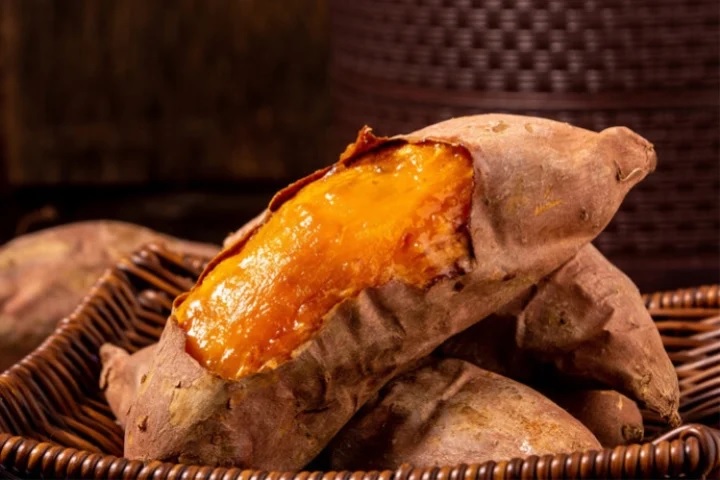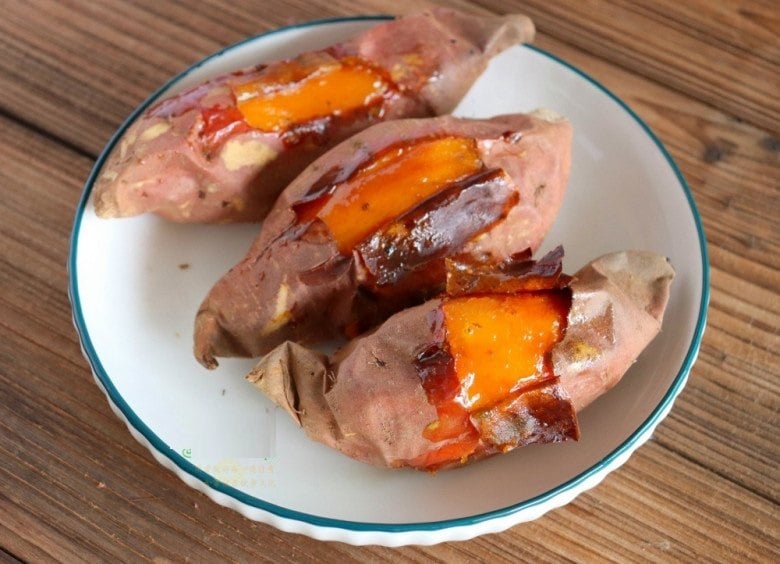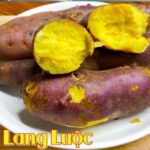## The Secret to Perfectly Roasted Sweet Potatoes
The key to achieving that perfect, honey-like consistency in your roasted sweet potatoes lies in selecting the right type of sweet potato and employing the appropriate cooking techniques.
Firstly, it’s important to understand that not all sweet potatoes are created equal when it comes to roasting. While there are numerous varieties available, the ideal choice for achieving that desirable, honey-like texture is the sweet potato variety aptly named “mật” in Vietnamese, which translates to “honey.”

Avoid overly fresh mật sweet potatoes as they tend to have a higher water content.
When shopping for mật sweet potatoes, look for tubers with a reddish-purple hue, preferably with some honey seeping out from the skin. The drier and more wrinkled the tubers are, the better, as they will produce a more abundant flow of honey during roasting. If possible, break off a small piece from the end of the tuber to inspect the flesh; if it appears orange-yellow and exudes honey, it’s a good choice.
Additionally, opt for tubers that are free from bruising, cracks, or blemishes, and steer clear of those with black spots or a pitted appearance. Aim for sweet potatoes of moderate size, as larger ones tend to be fibrous and less sweet.
If you purchase fresh sweet potatoes, let them sit in a cool, ventilated area for 2-3 days until the skins begin to wrinkle slightly. This waiting period will enhance the sweetness and honey production when roasted.
When preparing to roast your sweet potatoes at home, whether you’re using an oven or an air fryer, it’s crucial to select tubers of a moderate size, ranging from 200 to 350 grams. This ensures even cooking and an ample amount of honey. Larger tubers tend to cook unevenly, with the exterior cooking faster than the interior. Remember, choosing appropriately sized sweet potatoes is a pivotal step in achieving that coveted, honey-drenched result.
Roasting Sweet Potatoes in a Rice Cooker
While it’s convenient to buy pre-roasted sweet potatoes, doing so regularly can be costly. Fortunately, during the season, fresh mật sweet potatoes are readily available in the markets at affordable prices, allowing you to roast them yourself at home. If you don’t have an oven, you can achieve excellent results using a rice cooker with the following steps:
– Select 3-4 medium-sized, slender mật sweet potatoes, and trim off both ends, as these areas tend to be fibrous and harbor bacteria.
– Thoroughly wash the sweet potatoes under running water to remove any dirt or residue, then soak them in a saltwater solution for about 15 minutes to disinfect them.
– Use a toothpick or skewer to pierce multiple holes in the sweet potatoes, facilitating even cooking.
– Place the sweet potatoes in the rice cooker, arranging larger tubers at the bottom and smaller ones on top. There’s no need to add water, as mật sweet potatoes naturally contain a significant amount of moisture.
– Press the “cook” button on the rice cooker. After approximately 20 minutes, the cooker will switch to “keep warm.” At this point, use chopsticks or tongs to flip the sweet potatoes, and then press the “cook” button again. In about 10-15 minutes, your sweet potatoes should be beautifully roasted and oozing with delicious honey.

The roasted sweet potatoes will exhibit a vibrant yellow color, and their texture will be tender and moist, unlike the dryness that can result from oven-roasting. The honey will seep out through the cracks and puncture holes, enhancing the natural sweetness of the tubers.
Important Considerations when Roasting Mật Sweet Potatoes
– For consistent cooking times, choose sweet potatoes of similar size, and avoid overly large tubers.
– Sweet potatoes can be quite dirty and covered in soil. To thoroughly clean the skins, you can add a small amount of baking soda to the washing water.
– The more honey that seeps out during roasting, the better the quality of the sweet potatoes. Don’t worry about the sticky residue in the bottom of your rice cooker; it can be easily cleaned by soaking and scrubbing, or by using a mild baking soda solution to remove any stubborn brown stains.
– When using a rice cooker, refrain from adding water, as sweet potatoes naturally release moisture during the cooking process, preventing any harm to the appliance.
– For an even sweeter treat, store your fresh sweet potatoes in a cool, dry place for 2-3 days before roasting. As the tubers dry out, they will produce more honey and develop a more intense sweetness.






































